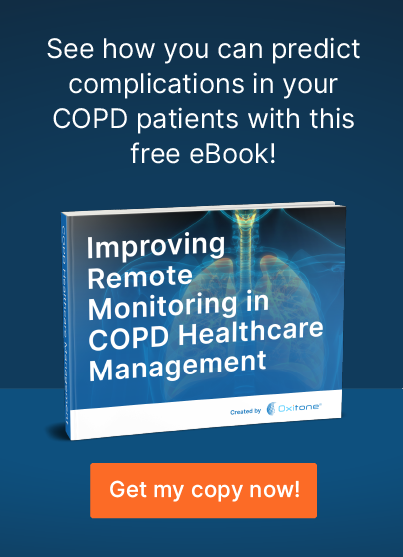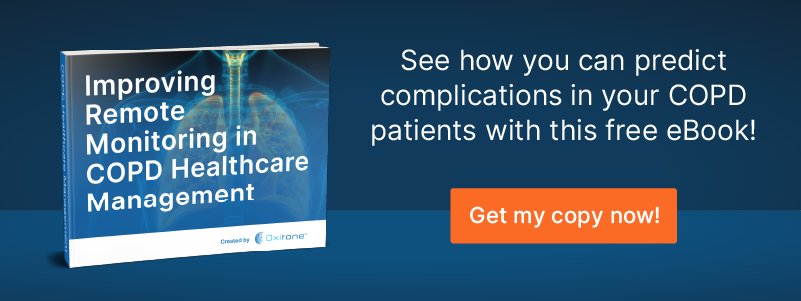COPD is the third most deadly condition worldwide and has been on the radar of the Medicare Hospital Readmission Reductions Program for more than five years. Chronic obstructive pulmonary disease (COPD) treatments have created an opportunity for clinicians looking to implement continuous remote patient monitoring (CRPM).
Making CRPM Part of Everyday Care
American Health Association and CMS guidelines for COPD monitoring note that the condition has a high readmission rate (more than 20%). The focus for patient monitoring has been on heart rate, respiratory rate, and oxygen saturation. Clinicians at NYU Langone hospital argue CRPM programs can be successful when:
- Tools are incorporated into provider workflows.
- Non-physician staff numbers are high enough.
- Funding and equity are enough to meet goals.
In this case, equity means that the focus must be on patients who often fall through the gaps in healthcare and on newer technologies. For example, those who speak English as a second language and those who are above working age may benefit significantly from CRPM, as they are at higher risk for COPD-related comorbidities.
Starting and Scaling Your Ideal Pilot Programs for CRPM
Clinicians already face significant time sinks in providing patient care using existing technologies. Their needs and reflections can be addressed by starting with a pilot program that focuses on patient adherence and usage, provider difficulties, and other limitations prior to scaling up a remote patient monitoring program.
The American Medical Association (AMA) notes that many programs, including CRPM, can die in the “pilot graveyard.” This happens when healthcare entities allow a program to stagnate by not:
- Addressing stakeholder concerns about implementation
- Securing financing for growth or negotiate rates
- Expanding programs to new patients with COPD or new staffing members
By starting with concrete goals for implementation, ranging from utilization to goals of reducing readmissions or other metrics, clinicians can quickly assess CRPM programs and expand them successfully.
Using Modern Clinical Practice Guidelines for Remote Patient Monitoring
Before implementation, clinicians and related staff must know what roles they play in the workflow of using CRPM solutions. When they are invited to help define the goals of implementation, they can also share in the success of the program. Patients, too, must have the literature to learn how to use monitoring devices and how to reach providers if issues occur, according to the AMA.
The American Heart Association (AHA) notes that RPM (and therefore, CRPM) is a critical component of care for patients with COPD and other cardiopulmonary conditions. They state:
“RPM can provide a more holistic view of a patient’s health over time, increase visibility into a patient’s adherence to a treatment, and enable timely intervention before a costly care episode. Clinicians can strengthen their relationships with, and improve the experience of, their patients by using the data sent to them via RPM to develop a personalized care plan and to engage in joint decision-making to foster better outcomes.”
In order to best meet patient needs and provide successful outcomes, the AHA claims that:
- Technologies must center evidence-based practices.
- Devices and systems must be customizable and not create unnecessary burdens, regardless of tech literacy.
- Data should be made available to patients and fully integrated into electronic health records.
- Patient data should be protected to at least the minimum required by HIPAA, and patients should be aware of what that data is.
Data Metrics, Privacy, and Overcoming Digital Health Roadblocks
The AMA notes that it can take up to six months to see enough data to show that a pilot program has succeeded. So, regardless of whether your CRPM pilot notes patient anxiety, readmission reductions, or other factors, don’t be discouraged if it takes time for the signal to break out from the noise.
Also, patient and clinician buy-in remains critical for program success. If your CRPM program is based on blood-oxygen meters or related tools that do not communicate with your current EHR systems, it is unlikely to succeed. This is also true if patients are unwilling or unable to make the device work for themselves.
Once these issues are ironed out, it is possible with the right devices to see measurable differences. Reduced hospital readmissions and decreased anxiety, along with other stress indicators, have been noted with the adoption of the Oxitone 1000M, for example. Oxitone 1000M is the first FDA-cleared wrist-sensor health monitor that works without a bulky fingertip probe. The device has demonstrated superior accuracy and usability through the data derived for both FDA and CE clearance and numerous clinical pilots. Visit Oxitone’s homepage to learn more about its role in monitoring COPD patients today.
Here at Oxitone, we boost value-based healthcare by delivering extraordinary patient, clinical, and economical outcomes at reduced medical utilization and cost. Patients need a prompt response to emergencies. Physicians need an easy and timely follow-up with patients. Our mission is to transform chronic disease management and help save lives worldwide.
Let’s save lives together! To see how we help remote patient monitoring companies and physicians improve the management and care of high-risk patients, contact us today!


